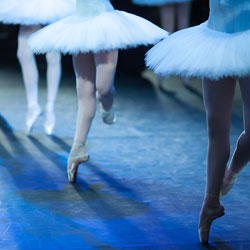It seems strange to think that one of the leading inspiration for ballet performances is the written work of an English man from the 16th century. William Shakespeare ‘The Bard’ is known throughout the world for his works including over 30 plays and 150 sonnets as well as two long narrative poems. While none of these were musical or relating to dance, his works have been transformed into a variety of music performances and one of the most popular is ballet.
History of Shakespeare and ballet
The idea of creating ballet performances using the works of Shakespeare isn’t a new one. The first mention of such an idea was back in 1761 when George Noverre used Anthony and Cleopatra as a ballet exhibition in the French court. There were examples through the 18th and 19th centuries including staging’s of Othello and Coriolano by Salvatore Vigano in Milan.
By the 1930s, some of the most famous examples were being created – including the 1934 version of Hamlet choreographed by Bronkslava Nijinska and featuring her sister Vaslav as the title role. Other famous examples include the staging of A Midsummer Night’s Dream with incidental music by Mendelssohn in 1937 at the Old Vic – this was by the company that later became the Royal Ballet.
Why the plays work
One of the reasons that these plays translate so well to ballet is the use of the right music with them. The example of Mendelssohn’s music for A Midsummer’s Night Dream is just one example and was used again by Marius Petipa for the Imperials Ballet of St Petersburg in 1876 and he even told Tchaikovsky to use it as inspiration for The Sleeping Beauty.
Another interesting point is that while there are no musical elements to Shakespeare’s plays and he doesn’t include dance scenes, there is a sense of music and dance to his work. From Romeo and Juliet meeting at a dance to the closing scenes in As You Like It where the young couples are told to ‘dance your happiness away’ there is often reference to music and dance in his works.
Some of the reason for this sense of dance in Shakespeare’s works reflect the thinking at the time. Dance was seen as a representation of the ‘cosmic order’ of things and that it would be common to include references to it in everyday life and conversations – much in the same way as we use music references and song lyrics today.
Tragedy and ballet
Of course, the main reason that these plays work so well in ballets is that there is such a strong emotional content. Whether it is the tragedy of Romeo and Juliet or the sadness of other characters, Shakespeare included a lot of emotion in this writing. And this high emotional content translates supremely well to dance, particularly to ballet with its innate expressiveness. And this is no doubt why it remains so popular – audiences can make an emotional connection with the dancers in ways they can’t always manage with a character on a page.
Dance is a great way to tell a story, express a feeling or just have fun, for ballet lessons in North Tyneside contact Jade Harrison School of Dance for details.
